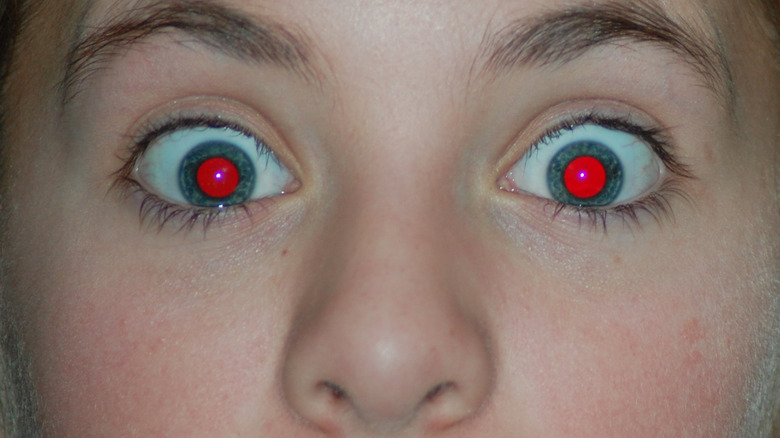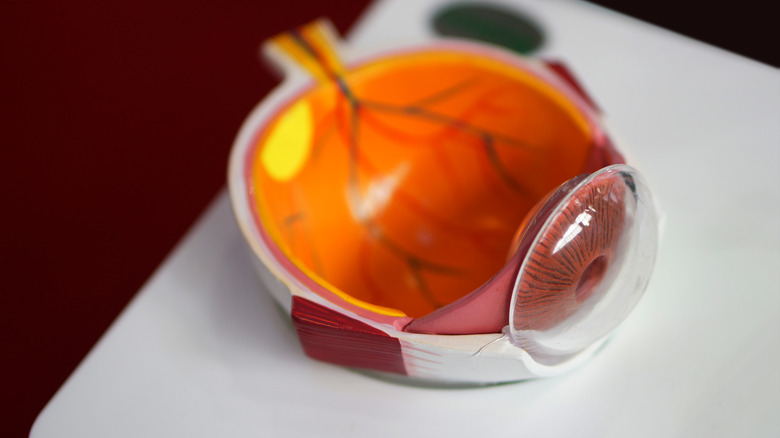What Causes The Red Eye In Photos?
The first photograph was taken nearly two centuries ago and was a blurry melange of French rooftops, as National Geographic notes. Over the years, camera technology has become so affordable, and so ubiquitous, that even children carry around devices capable of snapping high-quality pictures. That's a far cry from the way things were just a few generations ago, when a family portrait was an expensive and time-consuming proposition, largely available only to the wealthy, as Smithsonian explains.
Despite the tremendous advances in photography, we're still bedeviled by some of the same issues that plagued early photographers. If the subject moves too quickly, or the camera is jostled, expect a blurry snapshot. Similarly, bad lighting can ruin any shot, despite the technological capabilities of the camera being used.
That brings us to the dreaded red-eye effect (pictured above). Under the wrong conditions, even a smiling subject can have their eyes appear downright demonic in a photo.
The interplay of light, the camera, and the eye
When light enters a person's eye, it's focused on the lens by the cornea, which then travels to the retina before being turned into electric signals for the brain to interpret the image. But, through this whole process, some of that incoming light is reflected back out, as Mental Floss explains. However, so little light makes it back out that you don't notice the reflection. But when you take a flash photo, particularly in low-light conditions, several things happen in a fraction of a second.
As Defiance Optometric Group explains, a flood of light enters the eye, and the pupil undergoes its natural constriction process. However, that takes time, and before that happens, the light will have already been reflected out, and the camera lens will have already snapped. More often than not, the result is a terrifying reddish glow in the eyes — red because the surfaces of the eye that reflect light back out contain a reddish-brown pigment, and so it looks like red light (per Mental Floss).
Some modern cameras come with a means of mitigating the red-eye effect somewhat. They accomplish this by flashing twice in a brief period of time before taking the picture; the first flash causes the pupils to dilate, while the second provides the lighting the photographer wanted — hopefully with the subject's pupils constricted enough that no light will escape back to the camera.

